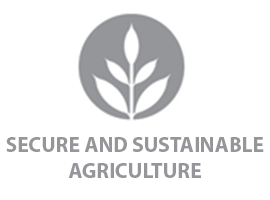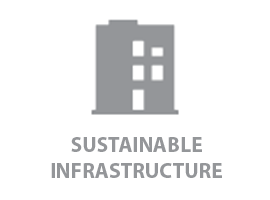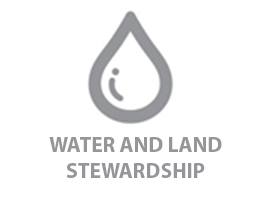Environment-Enhancing
FEWS Project
Research Menu
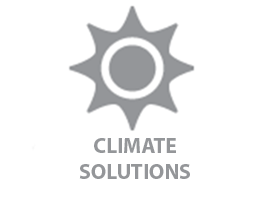 Current
Current
Funded
iSEE Work
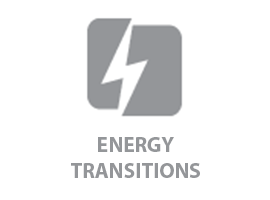 Current
Current
Funded
iSEE Work
Current
Funded
iSEE Work
Current
Funded
iSEE Work
Current
Funded
iSEE Work
Project Overview
![]()
![]() The E-E FEWS Project, which originally was seed-funded in 2018 through iSEE’s Campus as a Living Laboratory program, fits into two iSEE research themes: Water & Land Stewardship; and Energy Transitions.
The E-E FEWS Project, which originally was seed-funded in 2018 through iSEE’s Campus as a Living Laboratory program, fits into two iSEE research themes: Water & Land Stewardship; and Energy Transitions.
According to Lead Investigator Yuanhui Zhang: “The world’s food, energy, and water systems are tightly connected. Sometimes, they work seamlessly together, but often they are competing for the same pool of resources, namely fresh water and clean energy.”
Led by Zhang, a Professor of Agricultural & Biological Engineering, researchers from across campus will test a processing system that can deliver not only renewable energy, but also clean water and some bonus organic fertilizers for agriculture. Their design is meant to find synergies between water, food, and energy — where one category’s waste product could be another one’s ingredients.
“The U.S. produces an estimated 79 million dry tons of sustainably collectable livestock manure and food processing waste annually,” Zhang said. “We will demonstrate that this biowaste stream has the potential to be amplified via multi-cycle nutrient and wastewater reuse to 240-800 million tons of mixed algal-bacteria feedstocks that can be converted into 120-400 million tons of biocrude oil — equivalent to 12-40% of the total petroleum consumed annually in the U.S. — while also cleaning an estimated 7.9 billion tons of wastewater.”
A process called hydrothermal liquefaction (HTL) sits at the heart of the project — seed-funded by iSEE in 2018. Biowaste solids like campus food scraps or dried manures are exposed to high heat and pressure, replicating the geological process that created fossil fuels many millennia ago. While the energy-rich molecules of the biowaste become biocrude oil, the other nutrient-rich parts can be used as fertilizers for food production.
Meanwhile, the liquid parts of biowaste can be treated to become clean water. Algae will eat up all the pollutants and leave behind clean water, and they can also be “fed” with the leftover nutrients from the HTL step. At the end of their lifespan, the algae themselves serve as an input for HTL, making sure nothing goes to waste.
This project is built upon an ongoing, student-led Student Sustainability Committee (SSC)-funded project at the Urbana-Champaign Sanitary District to convert food waste on campus to biofuel using the EE-FEWS approach. Team partners built a pilot HTL reactor system on campus to produce biofuel from food waste.
Project News
- EE-FEWS Team Members Part of New Biowaste-to-Pavement Grant
- Fall 2022 Progress Update
- Summer 2022 Progress Update
- Summer 2021 Progress Update

Yuanhui Zhang
E-E FEWS Primary Investigator Yuanhui Zhang and team member Paul Davidson are part of a group of University of Illinois researchers who recently received a $2.5 million U.S. Department of Agriculture grant to explore converting food waste and swine manure into pavement binder and transportation fuels.
The proposal, “Pave the way: From Organic Waste to Renewable Roads With Advanced Resource Recovery Delineation (FORWARD),” is one of three projects funded through USDA’s National Institute of Food and Agriculture’s (NIFA) Bioproduct Pilot Program, which supports research and development of value-added products from agricultural commodities to enhance a circular bioeconomy.
“Petroleum will eventually run out, and we need to find alternatives that are recyclable and renewable,” said Zhang, Founder Professor of Agricultural and Biological Engineering (ABE) and lead on the new grant. The team also includes Davidson and Cody Allen, ABE; Ramez Hajj, Civil and Environmental Engineering; and Yalin Li, Institute for Sustainability, Energy and Environment (iSEE).
Read the full news release by College of ACES communicator Marianne Stein >>>
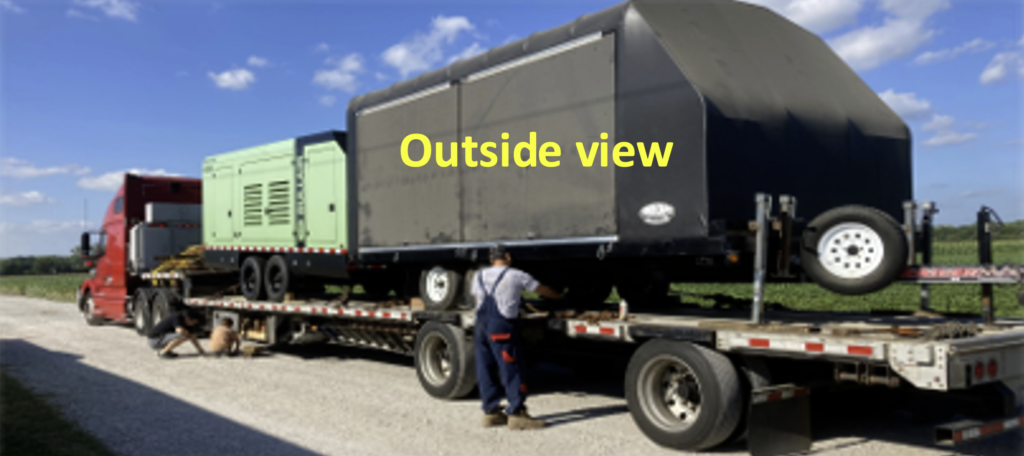 October 2022 updates from Lead Investigator Yuanhui Zhang:
October 2022 updates from Lead Investigator Yuanhui Zhang:
NEW PUBLICATION
The American Society of Agricultural and Biological Engineers (ASABE)’s Resource Magazine recently published a featured article titled “Toward a Circular Bioeconomy: Environment-Enhancing Food, Energy, and Water Systems (EE-FEWS),” authored by Zhang, a Professor of Agricultural and Biological Engineering.
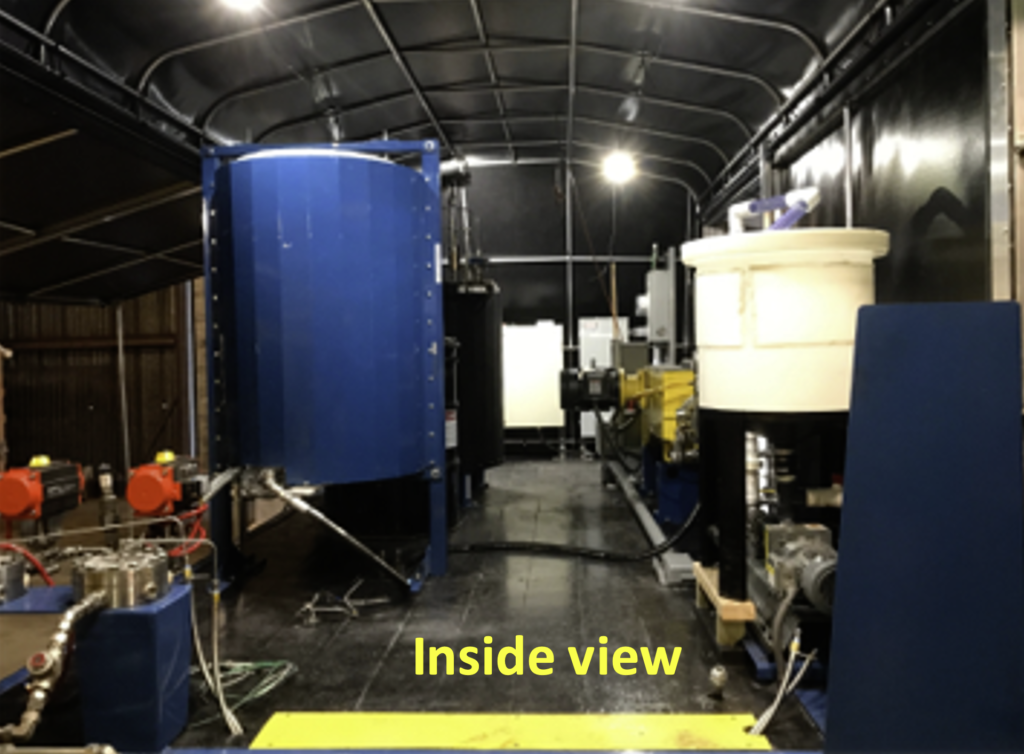 UPGRADED PILOT REACTOR IN ACTION!
UPGRADED PILOT REACTOR IN ACTION!
The EE-FEWS team focuses on converting wet biowaste into transportation fuels, especially sustainable aviation fuel (SAF) via hydrothermal liquefaction (HTL). The HTL research was seed-funded by iSEE and also supported by the Student Sustainability Committee in 2019, and since then it has leveraged three major projects (two from DOE and one from the U.S. Army) to convert food waste, wastewater sludge, and algal bloom into biocrude oils and transportation fuels.
Recently, the HTL pilot reactor from Zhang’s Lab (see photos) was ready for a field campaign to treat algal blooms in Florida.
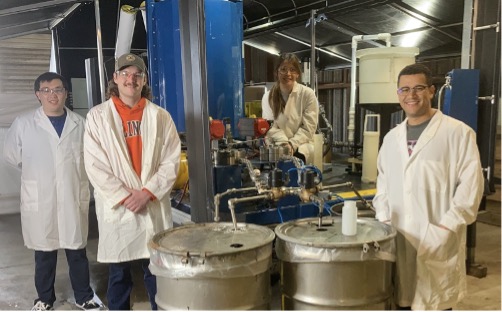
E-E FEWS graduate students working on waste-to-energy and nutrient recovery.
New information from Lead Investigator Yuanhui Zhang:
FUNDING, PROPOSALS
In the past year, the team was awarded:
-
- A U.S. Department of Energy Bioenergy Technologies Office (BETO) four-year grant for a project titled “Clean water, sustainable aviation fuel and renewable diesel production from wastewater” (2021-25, Total $4 million; $1.983 million for Zhang).
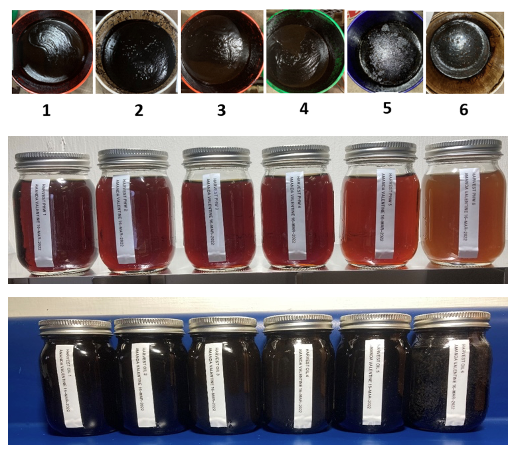
Raw products from HTL (top), PHW samples (middle) and biocrude samples (bottom).
SCIENTIFIC PROGRESS
“We have continued the pilot hydrothermal liquefaction (HTL) development and have successfully run the pilot HTL with three different feedstocks, algae, salad dressing waste, and food waste from the Harvest Market grocery story and restaurant,” Zhang said. “About 75 liters of each feedstock were run and the gross yield of the food waste biocrude was 68.35 wt%, prior to moisture removal. To further separate the biocrude from HTL wastewater (PHW), dewatering was performed and the final biocrude yield was 43.63% wt%.”
Catalytic upgrading of the HTL biocrude oil is in progress. One dozen heterogeneous catalysts for hydrodeoxygenation have been screened.
“he team’s objective is to produce sustainable aviation fuel (SAF) from the biowaste including food waste, algal biomass, and sludge,” he said.
The team is investigating several approaches for recovery of valuable resources in the PHW such as carbonaceous organics and nutrients. For example, electrochemical cells were used to convert nitrogen containing heteroaromatics compounds into hydrogen, nitrite, and ammonium. Researchers in the group are also screening an array of targeted algal species that could efficiently uptake the nutrient in PHW.
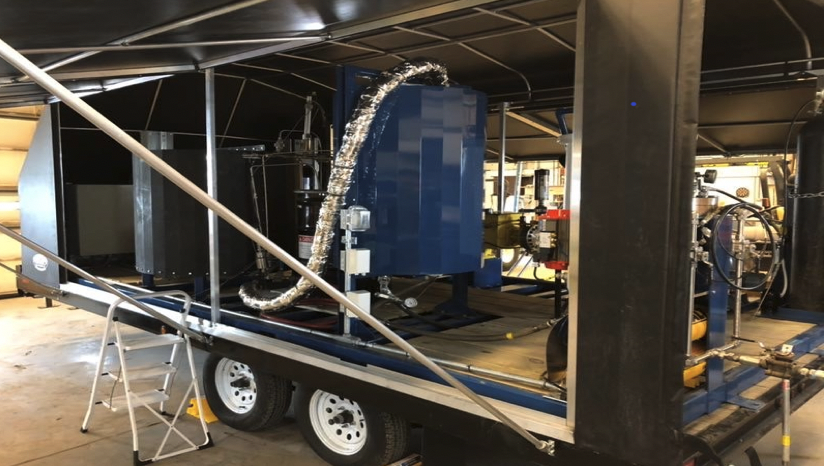
A mobile hydrothermal liquefaction (HTL) reactor at the University of Illinois with the capacity to treat 1 ton of wet waste per day.
New information from Lead Investigator Yuanhui Zhang:
FUNDING, PROPOSALS
In the past year, the team was awarded two grants:
-
- $1.8 million from the U.S. Department of Energy’s Bioenergy Technologies Office (BETO) over four years ($802,000 for Zhang) for a project titled “Synergistic Thermo-Microbial-Electrochemical (T-MEC) Approach for Drop-In Fuel Production from Wet Waste”; and
- $428,00 from the U.S Army Corps of Engineers’ Engineer Research and Development Center (ERDC) ($195,000 for Schideman and Zhang) for a project titled “Renewable Energy Harvesting from Harmful Algal Blooms (REHAB).”
Two proposals are pending:
-
- $4 million from BETO ($1.98 million for Zhang) for “Clean Water, Sustainable Aviation Fuel, and Renewable Diesel Production from Wastewater”; and
- $747,000 from ERDC ($501,000 for Zhang and Schideman) for “Improvements in Harmful Algal Bloom Biomass Pretreatment, Hydrothermal Conversion and Upgradation to Finished Biofuel Products.”
SCIENTIFIC PROGRESS
“During this project, we have continued the HTL reactor development,” Zhang said. “We have collaborated with an industry partner and developed a mobile continuous HTL reactor with a capacity of processing 1 ton of wet waste per day and producing 100 liters of biocrude oil per day. This capacity of producing HTL biocrude oil and PHW allows us to perform the downstream research on upscaled techniques for biocrude oil upgradation and PHW valorization.”
The team has demonstrated that the energy recovered from biocrude oil can be significantly higher than the HTL process energy — and it recently investigated the engine performance of HTL biodiesel blends, demonstrating the promise of the waste-to-fuel approach. The resulting biodiesel blend met the ASTM diesel standard and was tested in combustion engines (Lee et al., 2020; see publication below).
“Based on the diesel blend work, we started to explore kerosene (jet fuel) production from HTL biocrude oil, and recent tests have demonstrated that upgrading HTL biocrude oil to kerosene (bio-kerosene) is highly feasible,” Zhang said. “In summary, our E2-Energy approach has shown promising results in producing renewable biofuels, and at the same time protects the environment by recovering carbon and nutrients and reusing the wastewater. This iSEE project has enabled our team to expend our research program and become more competitive in obtaining external grants.”
The Team
Principal Investigator and co-PIs
- PI Yuanhui Zhang, Founder Professor of Agricultural & Biological Engineering (ABE)
His departmental page >>> - Ximing Cai, Professor of Civil & Environmental Engineering (CEE)
His departmental page >>> - Paul Davidson, Associate Professor of ABE
His departmental page >>> - Lance Schideman, Senior Research Engineer, Illinois Sustainable Technology Center (ISTC)
His ISTC page >>>
Operating team: Faculty, Scientists, Postdocs, and Students
- Amanda Valentine, Research Specialist, ABE
- Harshal Kawale, Postdoctoral Research Associate, ABE
- Rachael Dalke, Ph.D. Candidate, ABE
- Tiago Costa, Ph.D. Candidate, ABE
- Sabrina Summers, Ph.D. Candidate, ABE
Read more about Sabrina and her work >>> - Zixin Wang, Ph.D. Candidate, ABE
- Camila Bogarin, M.S. Candidate, ABE
- Luiz Araujo, Undergraduate, ABE
- Siyu Yang, Undergraduate, Natural Resources & Environmental Sciences
Former team members:
- Brenna Ellison, Associate Professor of Agricultural & Consumer Economics (ACE)
- Jack Juvik, Professor of Crop Sciences
- Matthew Stasiewicz, Assistant Professor of Food Science and Human Nutrition (FSHN)
- Brajendra K. Sharma, Senior Research Scientist, ISTC
- Hong Yang, Professor of Chemical & Biomolecular Engineering (ChBE)
- Aiersi Aierzhati, Ph.D. Candidate, ABE
- Michael Stablein, Ph.D. Candidate, ABE
- Jamison Watson, Ph.D. Candidate, ABE
- Avishek Biswas, Undergraduate, Chemistry
- Trevor Bultinck, Undergraduate, ABE
- Claire Hanrahan, Undergraduate, ABE
- Lane Weber, Undergraduate, ABE
- Niki Wu, Undergraduate, Chemistry
- Kang Xu, Undergraduate, ABE
- Matthew Zhang, Undergraduate, Mechanical Sciences & Engineering
Publications
(iSEE project members’ names in bold):
- Zhang, Y. “Toward a Circular Bioeconomy: Environment-Enhancing Food, Energy, and Water Systems (EE-FEWS).” Resource Magazine 29(3): 11-15 (Fall 2022)
- Summers, S., Yang, S., Watson, J., Zhang, Y. “Diesel blends produced via emulsification of hydrothermal liquefaction biocrude from food waste.” Fuel (June 2022)
- Li, R., Liu, D., Zhang, Y., Tommaso, G., Si, B., Liu, Z., Duan, N. “Enhanced anaerobic digestion of post-hydrothermal liquefaction wastewater: Bio-methane production, carbon distribution and microbial metabolism.” Science of the Total Environment (May 2022)
- Wang, Z., Zhang, C., Watson, J., Sharma, B.K., Si, B., Zhang, Y. “Adsorption or direct interspecies electron transfer? A comprehensive investigation of the role of biochar in anaerobic digestion of hydrothermal liquefaction aqueous phase.” Chemical Engineering Journal (May 2022)
- Yang, L., Su, Q., Si, B., Zhang, Ya., Zhang, Yu., Yang, H., Zhou, X. “Enhancing bioenergy production with carbon capture of microalgae by ultraviolet spectrum conversion via graphene oxide quantum dots.” Chemical Engineering Journal (February 2022)
- Stablein, M., Baracho, D.H., Watson, J.T., Silva, J.C., Zhang, Y., Lombardi, A.T. “Inhibition of Photosynthetic Performance and Mixotrophic Microalgal Growth in Post Hydrothermal Liquefaction Wastewater (PHW).” Algal Research (December 2021)
- Li, H., Cao, M., Zhang, Y., Liu, Z. 2021. “Hydrothermal liquefaction accelerates the toxicity and solubility of arsenic in biowaste.” Journal of Hazardous Materials (September 2021)
- Yang, Z., Lee, T.H., Li, Y., Chen, W.T., Zhang, Y. “Spray and combustion characteristics of pure hydrothermal liquefaction biofuel and mixture blends with diesel.” Fuel (June 2021)
- Carpio, R., Zhang, Y., Kuo, C.T., Chen, W.T., Schideman, L., de Leon, R. “Effects of reaction temperature and reaction time on the hydrothermal liquefaction of demineralized wastewater algal biomass.” Bioresource Technology Reports (June 2021)
- Aierzhati, A., Watson, J., Si, B., Stablein, M., Wang, T., Zhang, Y. “Development of a mobile, pilot scale hydrothermal liquefaction reactor: food waste conversion product analysis and techno-economic assessment.” Energy Conversion and Management: X (June 2021)
- Watson, J.; Si, B.; Wang, Z.; Wang, T.; Valentine, A.; Zhang, Y. “Towards transportation fuel production from food waste: Potential of biocrude oil distillates for gasoline, diesel, and jet fuel.” Fuel (May 2021)
- Li, H., Cao, M., Watson, J., Zhang, Y., Liu, Z. “In Situ hydrochar regulates Cu fate and speciation: Insights into transformation mechanism.” Journal of Hazardous Materials (May 2021)
- Dias, M.E., Oliveira, G.H.D., Couto, P.T., Dussánb, K.J., Zaiat, M., Ribeiro, R., Stablein, M.J., Watson, J.T., Zhang, Y., Tommaso, G. “Anaerobic digestion of hydrothermal liquefaction wastewater from spent coffee grounds.” Biomass and Bioenergy(May 2021)
- Costa, T., Akdeniz, N., Gates, R.S., Lowe, J., Zhang, Y. “Testing the plastic-wrapped composting system to dispose of swine mortalities during an animal disease outbreak.” Journal of Environmental Quality (April 2021)
- Wang, Z., Watson, J., Wang, T., Yi, S., Si, B., Zhang, Y. “Enhancing energy recovery via two stage co-fermentation of hydrothermal liquefaction aqueous phase and crude glycerol.” Energy Conversion and Management (March 2021)
- Watson, J.; Swoboda, M.; Aierzhati, A.; Wang, T.; Si, B.; Zhang, Y. “Biocrude Oil from Algal Bloom Microalgae: A Novel Integration of Biological and Thermochemical Techniques.” Environ. Science and Technology (January 2021)
- Stablein, M.; Aierzhati, A.; Watson, J.; Si, B.; Zhang, Y. “Characterization and Bioremediation Potential of Byproducts from Hydrothermal Liquefaction of Food Wastes.” Bioresource Technology Reports (August 2020)
- Lee, T.H.Y.; Yang, Z.; Zhang, Y.; Chen, W-T. “Investigation of Combustion and Spray of Biowaste Based Fuel and Diesel Blends.” Fuel (February 2020)
- Watson, J.; Wang, T.; Si, B.; Chen, W-T.; Aierzhati, A.; Zhang, Y. “Valorization of hydrothermal liquefaction aqueous phase: pathways towards commercial viability.” Progress in Energy and Combustion Science (December 2019)
- Jesse, S.D.; Zhang, Y.; Margenot, A.J.; Davidson, P.C. “Hydroponic Lettuce Production Using Treated Post-Hydrothermal Liquefaction Wastewater (PHW).” Sustainability 2019, 11, 3605 (June 2019)
- Aierzhati A.; Stablein, M.; Wu, N.; Kuo, C.; Si, B.; Kang, X.; Zhang, Y. “Experimental and model enhancement of food waste hydrothermal liquefaction with combined effects of biochemical composition and reaction conditions.” Bioresource Technology 284:139-147 (March 2019)
- Si, B.; Watson, J.; Aierzhati, A.; Yang, L.; Liu, Z.; Zhang, Y. “Biohythane production of post-hydrothermal liquefaction wastewater: A comparison of two-stage fermentation and catalytic hydrothermal gasification.” Bioresource Technology 274:335-342 (February 2019)
- Carpio, R.; Zhang, Y.; Kuo, C-T.; Chen, W-T.; Schideman, L.; de Leon, R. “Characterization and thermal decomposition of demineralized wastewater algae biomass.” Algal Research (January 2019)
- Li, M., Si, B.; Zhang, Y.; Watson, J.; Aierzhati, A. “Reduce recalcitrance of cornstalk using post-hydrothermal liquefaction wastewater pretreatment.” Bioresource Technology 279:57-66 (January 2019)
- Watson, J.; Lu, J.; Souza, R.; Zhang, Y.; Liu, Z. “Effects of the Extraction Solvents in Hydrothermal Liquefaction Processes: Biocrude Oil Quality and Energy Conversion Efficiency.” Energy 167: 189-197 (2019)
- Si, B.; Yang, L.; Zhou, X., Watson, J.; Tommaso, G.; Chen, W.T.; Liao, Q.; Duan, N.; Liu, Z.; Zhang, Y. “Anaerobic Conversion of Hydrothermal Liquefaction Aqueous Phase: Fate of Organics and Intensification with Granule Activated Carbon/Ozone Pretreatment.” Green Chemistry. 21:1305-1318. (December 2018)
